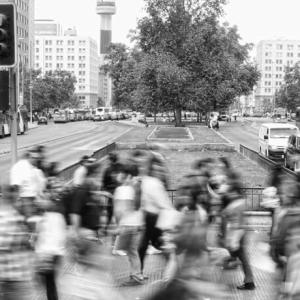
ITS Monday: Edition 32, 2020

This week’s small collection of curated content from the worlds of intelligent transport systems, smart mobility, and associated areas.
It’s a bumper, 10-article edition this week, with a strong showing in the area of active transport – particularly walking and cycling.
Included this week: Changing how we pay for transport, cycling infrastructure and benefits, walkability, MaaS and more.
And just in case you hadn’t caught it yet, we have a new series of interviews with transport professionals – Effects of COVID on the transport sector – what they see now, what they would like to happen post-pandemic, and what they think will happen. If you’d like to be join this conversation, drop us a line!
Now, scroll down, and see what’s in this week’s edition. Oh, and before you do, be sure check out the quickest way to receive our new content via the subscription box just below …


Why changing how we pay for transport is a good move
An important piece, on an important topic. It’s written by Michel Masson, the CEO of Infrastructure Victoria. ‘Our findings showed that by changing the way we pay for transport, we could reduce the amount of time people spend in congested peak traffic by eight per cent and increase traffic speeds by up to 25 per cent within inner Melbourne. In this example, up to 85 per cent of people could be better off, paying less than they do today for transport.’
In a similar vein, Professor David Hensher wrote Attacking road congestion on multiple fronts is a must for us back in 2018.
READ THE ARTICLE
New bike lanes among changes planned for post-COVID Melbourne commuters
Adding bike lanes, pop-up, permanent, or passing fad could well have been THE topic in ITS Monday since mid-March. This piece in the NineFax press is generated from the inquiry into the Victorian government’s response to the coronavirus pandemic, and the Minister for Transport Jacinta Allan speaking at the Public Accounts and Estimates Committee last week.
READ THE ARTICLE
Sydney’s bike network stuck in the slow lane
Meanwhile, in Sydney the topic of bicycles and infrastructure is apparently less, ahhh, rosy. ‘Committee for Sydney policy director Eamon Waterford said many cities were moving faster than Sydney on bike lanes despite the economic, health and employment benefits of a bicycle network.’
This article also quotes David Levinson, the University of Sydney’s Professor of Transport Engineering. Have you met David?
READ THE ARTICLE
Walking space guide: Towards pedestrian comfort and safety
This was published by iMOVE partner Transport for NSW in July just passed. ‘This Walking Space Guide provides a set of standards and tools to assist those responsible for Walking Spaces on streets, to ensure that sufficient space is provided to achieve comfortable environments which encourage people to walk.’
READ THE ARTICLE
New smart tool to step up walkability in rural Australia
Moving along from NSW in general in the story above, at a walking pace, we move to rural Australia. This article is from the RMIT University website, and is about a new project, led by RMIT, the University of Tasmania, and Deakin University (all iMOVE partners!). The project will explore and assess rural walkability in order to develop a smart online tool, supporting regional Australians to live healthy, active lives.
READ THE ARTICLE
We need to admit that cycling and walking are completely different activities
Moving away from Australia, this article is from the UK. Bristol to be specific. Author Dr Suzanne Audrey is a public health researcher at the University of Bristol with an interest in walking as transport. The statement in the article title is inarguable. But as Dr Audrey argues, it’s perhaps not being treated as fact in transport planning in the UK.
READ THE ARTICLE
How to get cycling on the agenda? Bikenomics!
As I clipped this for inclusion this week, I wondered if I had already linked to it in an earlier edition of ITS Monday. If I have, apologies … but then I’m not that concerned if I did. It’s a good piece. It was published by the Dutch Cycling Embassy in April this year, and looks at the benefits, physical, fiscal, community and more, of enabling more people to use cycling as a mode of transport.
READ THE ARTICLE
Sydney Metro Trains Facility update
Powering on, we move to powered transport, and back on track(s) to Australia. What’s happening in the land of Sydney Metro and the new driverless train network and stations? Click and learn!
We wrote about the Sydney Metro in early 2018, in Sydney’s new Metro driverless train undergoing track tests.
READ THE ARTICLE
Why owning your own car vs. participating in MaaS is a false dichotomy
Boyd Cohen is co-founder of Iomob. He recently published this article on Linkedin. The article grew from a recent conversation Cohen had, relating to the ‘… ongoing appeal of private car ownership and that until MaaS proves it is better than car ownership to the masses, MaaS will never really take off.’ He doesn’t agree.
On the topic of Mobility as a Service, we’ve put together a pretty comprehensive page about MaaS in Australia.
READ THE ARTICLE
CCTV monitors how many are wearing masks on trains
Sadly, COVID-19 and transport. The pandemic is still very much with us, and still very much affecting our lives, and the ways we get around. In Sydney the NSW government is ‘… using CCTV to monitor the number of people wearing face masks at five of Sydney’s busiest railway stations, with Transport Minister Andrew Constance warning they could become mandatory if rates don’t increase.’ Sigh.
READ THE ARTICLEDiscover more from iMOVE Australia Cooperative Research Centre | Transport R&D
Subscribe to get the latest posts sent to your email.

